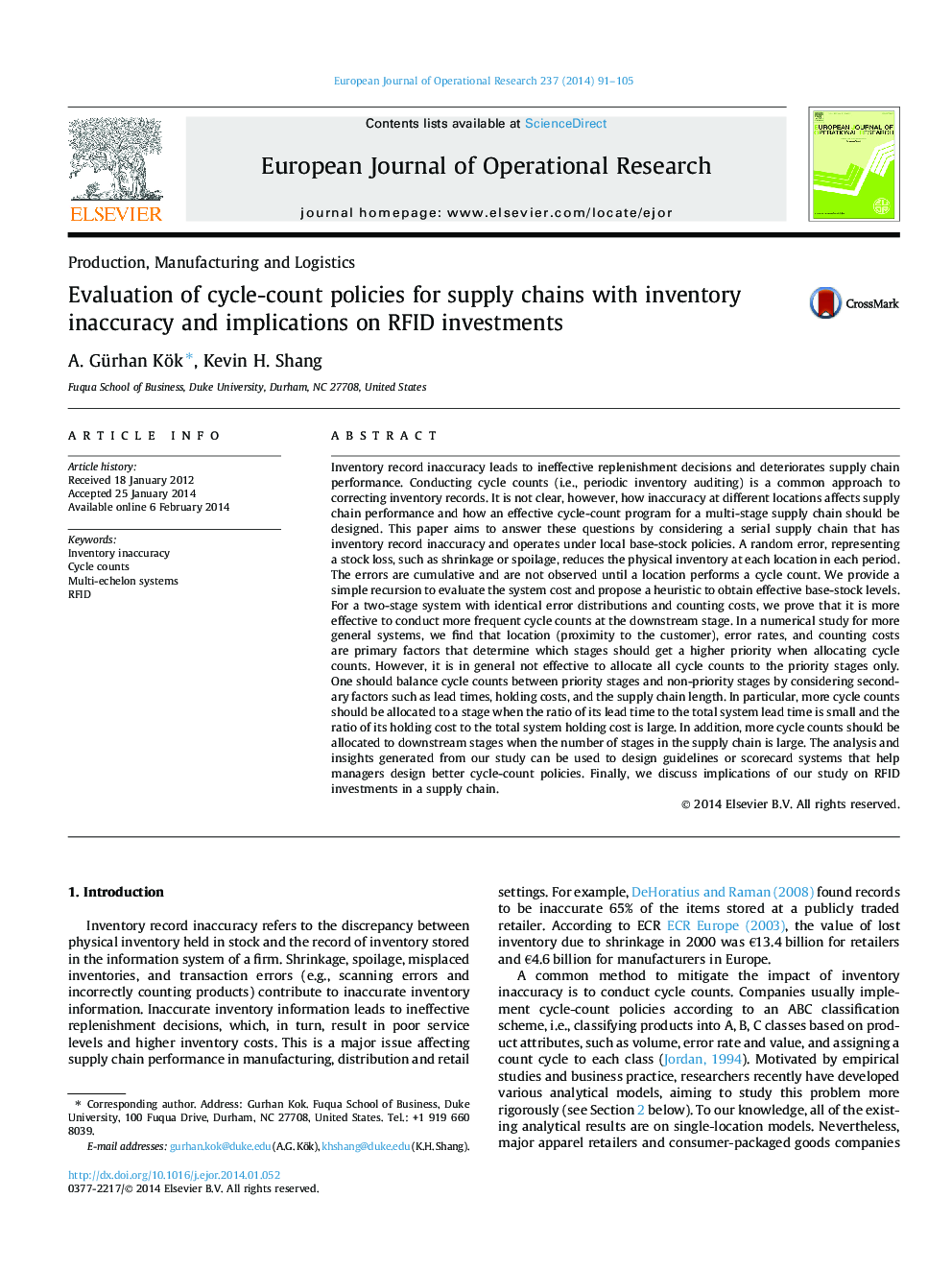| کد مقاله | کد نشریه | سال انتشار | مقاله انگلیسی | نسخه تمام متن |
|---|---|---|---|---|
| 480973 | 1446026 | 2014 | 15 صفحه PDF | دانلود رایگان |

• We consider cycle-counts in supply chains with inventory inaccuracy.
• We provide a recursion to evaluate cost and a heuristic to obtain base-stock levels.
• It is more effective to conduct more frequent cycle counts at the downstream stage.
• Location, error rates, and costs are primary factors for cycle-count allocation.
Inventory record inaccuracy leads to ineffective replenishment decisions and deteriorates supply chain performance. Conducting cycle counts (i.e., periodic inventory auditing) is a common approach to correcting inventory records. It is not clear, however, how inaccuracy at different locations affects supply chain performance and how an effective cycle-count program for a multi-stage supply chain should be designed. This paper aims to answer these questions by considering a serial supply chain that has inventory record inaccuracy and operates under local base-stock policies. A random error, representing a stock loss, such as shrinkage or spoilage, reduces the physical inventory at each location in each period. The errors are cumulative and are not observed until a location performs a cycle count. We provide a simple recursion to evaluate the system cost and propose a heuristic to obtain effective base-stock levels. For a two-stage system with identical error distributions and counting costs, we prove that it is more effective to conduct more frequent cycle counts at the downstream stage. In a numerical study for more general systems, we find that location (proximity to the customer), error rates, and counting costs are primary factors that determine which stages should get a higher priority when allocating cycle counts. However, it is in general not effective to allocate all cycle counts to the priority stages only. One should balance cycle counts between priority stages and non-priority stages by considering secondary factors such as lead times, holding costs, and the supply chain length. In particular, more cycle counts should be allocated to a stage when the ratio of its lead time to the total system lead time is small and the ratio of its holding cost to the total system holding cost is large. In addition, more cycle counts should be allocated to downstream stages when the number of stages in the supply chain is large. The analysis and insights generated from our study can be used to design guidelines or scorecard systems that help managers design better cycle-count policies. Finally, we discuss implications of our study on RFID investments in a supply chain.
Journal: European Journal of Operational Research - Volume 237, Issue 1, 16 August 2014, Pages 91–105